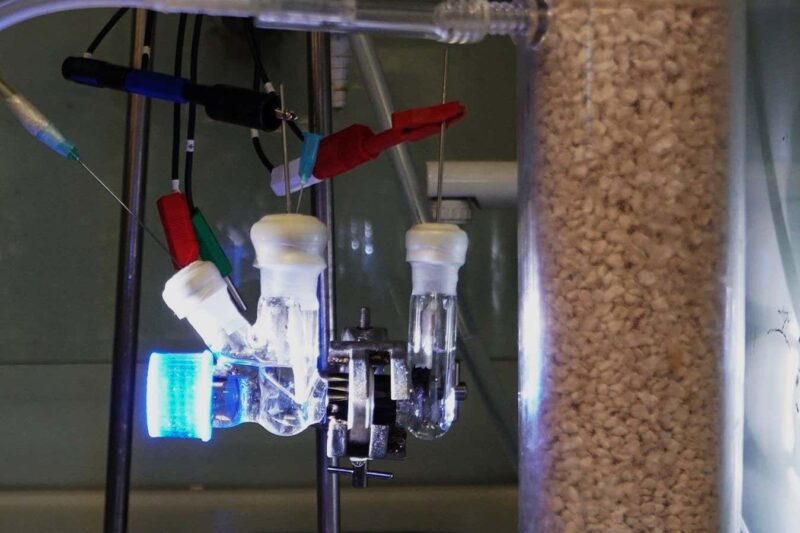The device absorbs carbon from the atmosphere and recycles waste plastic. Mohamad Ariffin Annuar
In a double-whammy of recycling, a solar-powered device could help remove carbon dioxide from the air while also converting plastic waste into sustainable fuel and useful chemicals. Previously, pure CO2 was used in research on solar fuel cells, a technology that uses sunlight to drive chemical reactions that produce fuels. Now, Erwin Reisner and colleagues at the University of Cambridge have created a device that uses CO2 captured from industrial processes or directly from the air, filtering out other gases as needed.
“There has been significant progress in developing carbon capture and sequestration technologies.” “At the same time, there has been a lot of progress in solar fuels devices,” says Reisner. “This is our first time combining the two.”
The device is divided into two sections. One filters air through an alkaline solution to capture CO2, then converts it into syngas, a fuel used to produce ammonia or methanol. In the other, a PET plastic waste solution is converted into glycolic acid, a chemical commonly used in cosmetics.
Combining these two compartments is more than just making a two-in-one device because they actually work together. CO2 must gain electrons in order to transform into syngas. Typically, this is accomplished by breaking up water molecules, but this is an energy-intensive process, according to Reisner. Instead, the two compartments function as a battery, with the CO2 side acting as the cathode and the plastic side acting as the anode, transferring electrons between them.
The technology has a long way to go as a proof-of-concept prototype before it can be deployed on a large scale. “One of the things we are trying to improve is efficiency,” says Sayan Kar, a team member at the University of Cambridge.
In the future, the researchers hope that the technology will aid in the complete elimination of new fossil fuels from the economy. “The process is completely circular,” Reisner explains. “We collect CO2. We produce a fuel. You make use of it. “You create CO2 again.”
Reisner also points out that this demonstrates that there is an alternative to simply capturing CO2 and storing it in locations such as underground reservoirs. “You pump it somewhere, but we don’t know what the long-term effects are.” Now we demonstrate that you can actually make useful products out of it.”
“It’s a nice chemistry, but it’s difficult to say whether it would compete with existing processes,” says Jotheeswari Kothandaraman of Washington’s Pacific Northwest National Laboratory. “Techno-economic and life cycle assessments are required to determine the approach’s economic feasibility and carbon footprint.”
FAQs
1. What does the solar-powered fuel cell do?
The solar-powered fuel cell not only removes carbon dioxide from the air but also converts plastic waste into sustainable fuel and useful chemicals.
2. How does the device capture CO2?
The device filters air through an alkaline solution to capture CO2, which can be sourced from industrial processes or directly from the air, while filtering out other gases.
3. What is the role of the two compartments in the device?
The two compartments work together as a battery, with the CO2 side acting as the cathode and the plastic side as the anode, facilitating the transformation of CO2 into syngas.
4. What is syngas, and what can it be used for?
Syngas is a fuel used to produce ammonia or methanol, offering a sustainable energy source and potential applications in various industries.
5. How does this technology contribute to a circular process?
The technology captures CO2, converts it into fuel, which can then be used and ultimately leads to the production of CO2 again, creating a circular and sustainable process.







